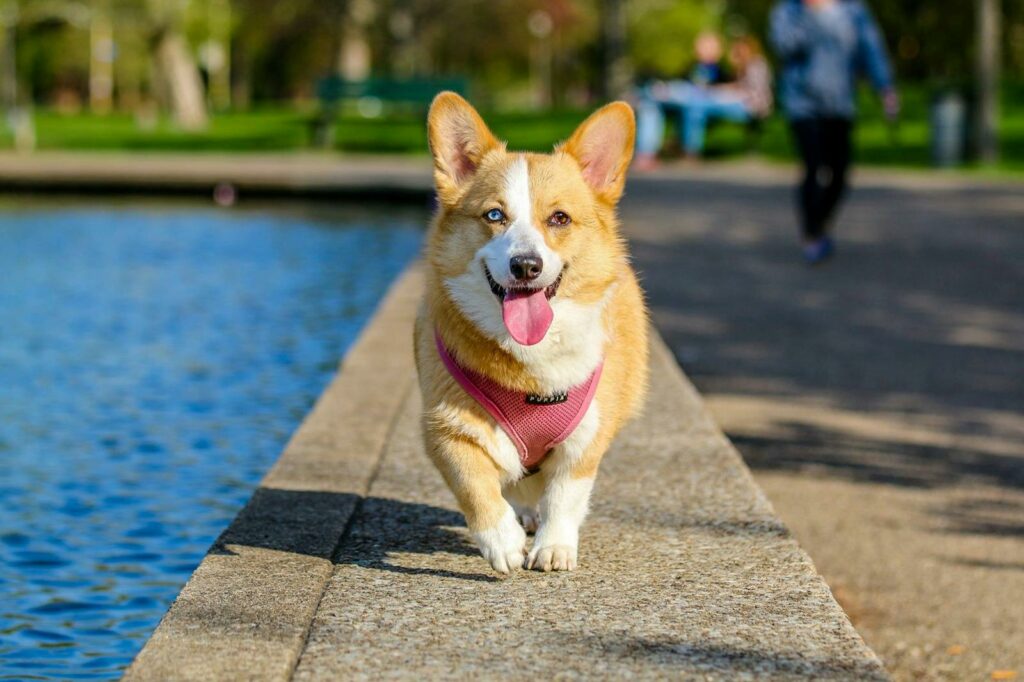Have you ever wondered if your furry friend could benefit from a soothing massage? Just like humans, dogs can experience stress, tension, and physical discomfort that a well-deserved massage can alleviate. Whether your pooch is dealing with arthritis, anxiety, or simply needs some TLC, a dog massage can work wonders.
Why consider dog massage? The benefits are numerous. Besides enhancing your dog’s physical well-being, massages can also strengthen the bond between you and your pet. Picture it as a calming experience where you get to spend quality time with your four-legged buddy while contributing positively to their health.
So, where should you begin? Understanding the basic techniques and knowing the right tips can turn you from a novice to your dog’s favorite masseuse. Not only is this practice therapeutic for them, but it can also be incredibly rewarding for you.
What are the main health benefits of dog massage?
Dog massage can significantly improve circulation, which helps to deliver oxygen and nutrients to tissues more efficiently. This can promote healing and overall vitality in your pet. Regular massage sessions can help to reduce stress and anxiety in dogs. The physical touch and rhythmic movements can have a calming effect, releasing endorphins that promote a sense of well-being.Massage can alleviate muscle tension and soreness, especially in active or older dogs. By working on specific muscle groups, you can help to relieve discomfort and improve your dog’s range of motion.
Improved digestion is another benefit of dog massage. Gentle abdominal massages can stimulate the digestive system, helping to alleviate issues like constipation and bloating. Dog massage can enhance the bond between pet and owner. The time spent together during a massage session can strengthen your relationship, fostering trust and emotional connection. Regular massages can also help in early detection of health issues. As you become more familiar with your dog’s body, you may notice lumps, bumps, or areas of sensitivity that could indicate underlying health problems.
Massage can support the immune system by reducing stress hormones and promoting relaxation. A less stressed dog is often a healthier dog, with a stronger immune response to potential illnesses.
Furthermore, regular massage sessions can help to increase blood flow, aiding in the removal of toxins and the delivery of nutrients to tissues. This boost in circulation ensures that your dog’s organs and muscles are well-nourished and functioning optimally.
Additionally, early detection of abnormal growths or changes in your dog’s body can be a lifesaver. By routinely feeling their muscles and joints, you can identify any lumps, bumps, or areas of discomfort that might require veterinary attention. This proactive approach supports overall health and can lead to earlier interventions if needed.
Another significant benefit is improved joint flexibility and muscle tone. Massage can help to loosen tight muscles, reduce stiffness, and enhance your dog’s range of motion. This is particularly beneficial for senior dogs or those recovering from injuries, allowing them to move more freely and with less pain.
Lastly, massage is an excellent way to bond with your furry friend. The gentle touch and focused attention can deepen your connection, making your dog feel loved and cared for. This emotional benefit is just as valuable as the physical ones, contributing to a happier, more content pet.
Which dog breeds benefit the most from massage?
All dog breeds can benefit from massage, but certain breeds may experience more pronounced advantages due to their unique physical and behavioral characteristics. For instance, large breeds like German Shepherds, Labrador Retrievers, and Golden Retrievers often suffer from joint issues such as hip dysplasia and arthritis. Regular massage can help alleviate pain, improve joint mobility, and enhance overall comfort for these dogs.
Working breeds, such as Border Collies, Australian Shepherds, and Belgian Malinois, are highly active and often engage in strenuous physical activities. Massage can aid in muscle recovery, reduce the risk of injury, and improve performance by increasing circulation and flexibility. Small and toy breeds, including Chihuahuas, Pomeranians, and Dachshunds, can also benefit from massage. These breeds are prone to anxiety and stress, and gentle massage can help calm their nerves, reduce anxiety, and promote relaxation.
Senior dogs, regardless of breed, often face age-related issues such as stiffness, decreased mobility, and chronic pain. Massage can be particularly beneficial for older dogs by improving circulation, reducing pain, and enhancing their overall quality of life. Breeds with long backs, like Dachshunds and Basset Hounds, are susceptible to spinal issues and intervertebral disc disease. Regular massage can help maintain spinal health, reduce muscle tension, and prevent potential problems.
Breeds with dense muscle mass, such as Rottweilers and Pit Bulls, can benefit from massage to relieve muscle tension and soreness. This can be especially helpful after vigorous exercise or training sessions. Breeds prone to skin conditions, like Bulldogs and Shar-Peis, can also gain from massage. It can help improve skin health by promoting better blood flow and aiding in the distribution of natural oils, which can alleviate some skin issues.
What are the most effective dog massage techniques?
Effleurage is a foundational technique in dog massage, involving long, gliding strokes that help to warm up the dog’s muscles and improve blood circulation. This method is particularly effective for relaxing your pet and preparing them for deeper massage work. Effleurage can be performed with light to moderate pressure, depending on your dog’s comfort level, and is typically done in the direction of the fur growth.
Petrissage involves kneading and rolling the muscles, which can help to release muscle tension and improve flexibility. This technique is beneficial for dogs with tight or sore muscles, as it promotes the flow of blood and lymphatic fluids, aiding in the removal of toxins. Petrissage can be performed using the fingers, thumbs, or the whole hand, depending on the size of the muscle group being targeted.
Friction massage focuses on deeper layers of muscle tissue and is used to break down adhesions and scar tissue. This technique involves applying pressure with small, circular movements, often using the fingertips or knuckles. Friction massage can be particularly useful for dogs recovering from injuries or surgeries, as it helps to improve mobility and reduce pain. However, it should be done with caution and only on specific areas that need attention.
Tapotement, or rhythmic tapping, is a stimulating technique that involves light, rapid tapping or patting motions. This method can invigorate the dog’s muscles and nervous system, making it useful for energizing a lethargic pet or waking up muscles before physical activity. Tapotement should be performed gently and can be done with the edge of the hand, fingertips, or a cupped hand, depending on the desired effect.
Passive stretching is an essential component of dog massage, aimed at improving flexibility and range of motion. This technique involves gently extending and flexing the dog’s limbs and joints to their natural limits. Passive stretching can help to prevent injuries, especially in active or aging dogs, by maintaining healthy joint function and muscle elasticity. It’s important to perform stretches slowly and carefully, observing the dog’s reactions to ensure they are comfortable and not in pain.
| Benefit | Description |
|---|---|
| Flexibility | Improves the dog’s ability to move their limbs and joints freely. |
| Injury Prevention | Aids in preventing strains and sprains, especially in active dogs. |
| Joint Health | Maintains healthy joint function, reducing the risk of arthritis. |
| Muscle Elasticity | Helps maintain the elasticity of muscles, improving overall mobility. |
| Comfort | Ensures that your pet is not experiencing pain during stretching. |
Are there any risks or contraindications for dog massage?
While dog massage can offer numerous benefits, there are certain risks and contraindications that pet owners should be aware of. One primary concern is the presence of underlying medical conditions. Dogs with fractures, open wounds, or skin infections should not receive massages, as this could exacerbate their condition or cause additional pain. Another important consideration is the dog’s temperament and comfort level. Some dogs may not enjoy being touched or may become anxious or aggressive during a massage. It’s crucial to observe your dog’s reactions and stop the massage if they show signs of distress, such as growling, snapping, or trying to escape.
Additionally, dogs with certain chronic conditions, such as arthritis or hip dysplasia, may require specialized massage techniques. Applying too much pressure or using incorrect methods can potentially worsen their symptoms. Consulting with a veterinarian or a certified canine massage therapist can help ensure that the massage is both safe and effective for dogs with these conditions.
It’s also important to be cautious with senior dogs or those with compromised immune systems. These dogs may have more fragile bodies and may not tolerate certain types of massage well. Gentle techniques and shorter sessions are recommended for these pets to avoid causing any harm.
Lastly, always avoid massaging a dog immediately after they have eaten or if they are showing signs of illness, such as vomiting, diarrhea, or lethargy. Massaging a dog in these states can lead to further discomfort and potential health complications. Always ensure your dog is in a calm and healthy state before beginning a massage session.
How can pet owners safely perform massages at home?
Before starting a massage, it’s crucial for pet owners to create a calm and comfortable environment for their dog. Ensure the space is quiet, free from distractions, and that your dog feels safe. This helps the dog to relax and be more receptive to the massage. Begin by gently petting your dog to help them relax and get accustomed to your touch. Use slow, smooth strokes along their back, sides, and legs. This initial contact helps to build trust and prepares the dog for deeper massage techniques.
Use your fingertips to apply gentle pressure in circular motions. Start at the head and work your way down the body. Pay attention to areas where your dog seems to enjoy the touch and be cautious around sensitive spots. Always observe your dog’s reactions and adjust the pressure accordingly.
Focus on the major muscle groups, such as the shoulders, back, and thighs. Use your palms to apply broader strokes, which can help to relieve tension and improve blood circulation. Remember to keep your movements slow and deliberate to avoid startling your dog. Massaging the joints can be particularly beneficial, especially for older dogs or those with arthritis. Use gentle, circular motions around the joints, being careful not to apply too much pressure. This can help to alleviate stiffness and improve mobility.
Pay attention to your dog’s body language throughout the massage. Signs of discomfort, such as flinching, pulling away, or growling, indicate that you should stop or adjust your technique. Conversely, signs of relaxation, like sighing, leaning into your touch, or closing their eyes, suggest that your dog is enjoying the massage.
Hydration is important after a massage. Ensure your dog has access to fresh water, as massage can stimulate the release of toxins from the muscles, which need to be flushed out of the body. Consistency is key to reaping the benefits of dog massage. Aim to incorporate short massage sessions into your regular routine, gradually increasing the duration as your dog becomes more comfortable. Regular massages can help to strengthen the bond between you and your pet, as well as promote overall well-being.
How long should a typical dog massage session last?
The duration of a dog massage session varies depending on your dog’s age, size, and temperament. For puppies, keep the session short and sweet, typically no more than five minutes. These little ones have shorter attention spans and are still getting used to the new sensation.
For adult dogs, you can extend the session to anywhere from 10 to 20 minutes. This gives enough time to engage different muscle groups and truly help them unwind. Remember, a consistent, calming routine is key.
Additionally, always be mindful of your dog’s reactions. If they seem uncomfortable or restless, it may be a sign that the session needs to be shortened. On the contrary, if they’re fully engaged and relaxed, they may appreciate the longer interaction.
For a practical tip, consider breaking up the massage into smaller segments throughout the day. This can be particularly beneficial for high-energy dogs who might find it challenging to stay still for extended periods. For instance, incorporate a quick five-minute session in the morning and another in the evening.
Finally, observe your dog’s overall health and consult with a veterinarian or certified animal massage therapist to tailor the session to your dog’s specific needs.
With regular practice, you’ll soon find the perfect balance that leaves your dog feeling pampered and relaxed.



